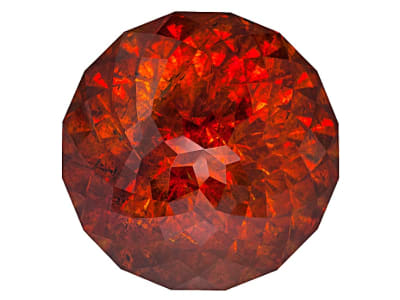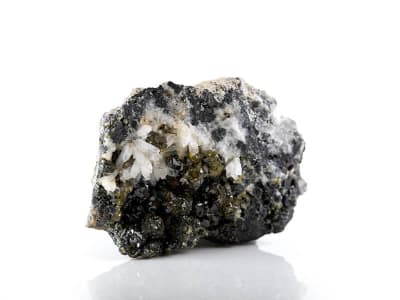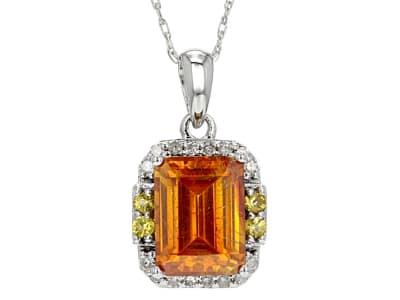Sphalerite makes an excellent collector’s stone, but it is too soft for jewelry. It is difficult to cut and polish due to perfect cleavage in six directions. Gemstone-quality material, when faceted, is remarkable due to its incredibly high dispersion.
General Information
Common Name
Sphalerite
Species
Sphalerite
Transparency
Transparent - Opaque
Dispersion
Strength: Extreme Fire Value: 0.156
Refractive Index
Over The Limit 2.369-2.500
Optic Character
NA
Optic Sign
NA
Polariscope Reaction
Singly Refractive (SR)
Fluorescence
SWUV: Inert to yellow, orange or strong orange-red
LWUV: Inert to yellow, orange or strong orange-red
LWUV: Inert to yellow, orange or strong orange-red
Pleochroism
None
Hardness
3.5-4
Streak
Yellowish To Light Brown
Specific Gravity
3.900-4.100 Typical:4.050
Toughness
Poor
Inclusions
Sphalerite is frequently color zoned and has very strong dispersion.
Luster
Adamantine, Submetallic, Resinous, Greasy
Fracture
Conchoidal, Uneven
Cleavage
Perfect, in six directions
Chemical Name
zinc iron sulfide
Chemical Formula
(Zn,Fe)S
Crystal System
Cubic
Chemistry Classification
Sulfide
Sphalerite Colors
-
 Black
Black -
 Brown
Brown -
 Gray
Gray -
 Green
Green -
 Green
Green -
 Multi-color
Multi-color -
 Orange
Orange -
 Red
Red -
 Yellow
Yellow -
 Yellow
Yellow
Alternate Names
Cleiophane, Marmatite, Zinc Blende
Countries of Origin
Russian Federation; Republic of Kosovo; Sri Lanka; United States of America; Madagascar; United Kingdom of Great Britain and Northern Ireland; Spain; Canada; Unknown; China; Mexico; Bulgaria; Germany
Care
Sphalerite is a very soft stone, so be mindful of scratching. It is generally not suited for jewelry use.


